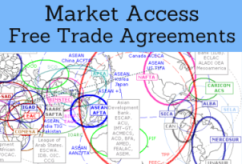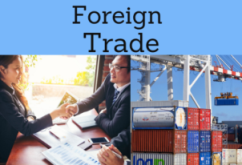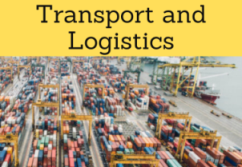Business in São Tomé and Príncipe. Cocoa
São Tomé and Príncipe, a tourist country, cocoa, Oil sector
São Tomé and Príncipe: A “tourist country” and a cocoa exporter.
- São Tomé and Príncipe is a flag of convenience

- Introduction to the Democratic Republic of São Tomé and Príncipe (Central Africa)
- Santomean Economy
- International Trade of São Tomé
- Business Opportunities in São Tomé and Príncipe
- Access to the Santomean market
- Business Plan for São Tomé and Príncipe

The purposes of the subject “Foreign Trade, Logistics and Business in São Tomé and Príncipe” are the following:
- To learn to do business in São Tomé and Príncipe
- To conduct research on business opportunities in São Tomé and Príncipe
- To learn about Santomean Trade Agreements
- To analyze trade relationships of São Tomé and Príncipe with the student's country
- To learn how to develop a business plan for São Tomé and Príncipe

The Subject “Foreign Trade, Logistics and Business in São Tomé and Príncipe” is included within the curriculum of the following academic programs at EENI Global Business School:
Doctorate in African Business.

Master in Business in Africa, Transport and Logistics in Africa.

Languages:  or
or  São Tomé
São Tomé  São Tomé e Príncipe
São Tomé e Príncipe  Santo Tome.
Santo Tome.
Credits of the Subject “Doing Business in São Tomé and Príncipe”: 1

International Trade, Logistics and Business in São Tomé and Príncipe


Santomean Preferential Access and Trade Agreements:
- São Tomé and Príncipe and the Central African Economic Area
- Economic Community of Central African States (ECCAS)
- African Continental Free Trade Area
- AGOA - U.S.-
- Africa-EU Partnership
- Portugal-São Tomé and Príncipe Economic Cooperation between
- Community of Sahel-Saharan States (CEN-SAD)

- WTO (in process of accession)
- World Customs Organization (WCO)
- Kyoto Convention
African Organizations:
- Economic Commission for Africa
- African Union
- AU Convention on Preventing and Combating Corruption (not signed)
- AUDA-NEPAD
- African Development Bank
- Africa-Asia Partnership
- Africa-India Cooperation
- Africa-BRICS
- Africa-Turkey Partnership
- Africa-Korea Partnership
- Africa-Japan Cooperation
- Africa-South America Summit
- China-Africa Cooperation
- Afro-Arab Cooperation
- Arab Bank for Africa (BADEA)

- United Nations
- Conference on Trade and Development (UNCTAD)
- International Trade Centre
- World Intellectual Property Organization (WIPO)
- World Bank
- World Trade Organization (WTO)
- International Monetary Fund
- Community of Portuguese Speaking Countries
- São Tomé and Príncipe is an African insular country
- Neighboring countries (by sea): Gabon, Cameroon, and Equatorial Guinea
- Santomean Population: 212,000 people
- Capital of São Tomé and Príncipe: São Tomé (137,500 people)
- Literacy rate in São Tomé and Príncipe: 70%
- The official language of São Tomé and Príncipe is Portuguese
- Santomean Area: 1,000 km²
- Government of São Tomé and Príncipe: Republic. Multiparty Democracy
- Santomean Climate: tropical
- Independence of São Tomé and Príncipe: 1975 (Portugal)
More information about São Tomé and Príncipe (EENI African Business Portal).
Religions in São Tomé and Príncipe.
- 80% of Santomean population is Christian (Catholicism)
- African Traditional Religions
São Tomé and Príncipe belongs to the Central African Economic Area.

Economy of São Tomé and Príncipe:
- Tourism and agriculture represent the largest export sectors of São Tomé and Príncipe
- The Government has created new incentives for the promotion of the free trade zones
- GDP
- 20% agriculture and forestry
- 19% industrial sector
- 61% services
- National Currency: Dobras (STD)
- Cash Crops in São Tomé and Príncipe: Cocoa, coffee, coconut, and pepper
- Top export product of São Tomé and Príncipe: cocoa (95% of total exports)
- Top trading partners of São Tomé and Príncipe: the EU (60% with Portugal) and Angola
- Trade with ECCAS: only 2% of total trade of São Tomé and Príncipe
- Potential sectors: tourism, energy, petrol, construction, finances, telecommunications, health, and education
- Political stability
- Lack physical infrastructure
- Weak judicial system
- The industry of São Tomé and Príncipe is limited to the export agricultural product transformation (90% of the export earnings are derived from cocoa monocultures)
- Other exports: Copra, palm kernel, and coffee
- The State plantations occupy 80% of the crop area of Santo Tomé
- The entry into force of the Agreement on Economic Cooperation between São Tomé and Príncipe and Portugal is one of the measures announced by the Central Bank of São Tomé
(c) EENI Global Business School (1995-2025)
Top of this page








 WhatsApp
WhatsApp
